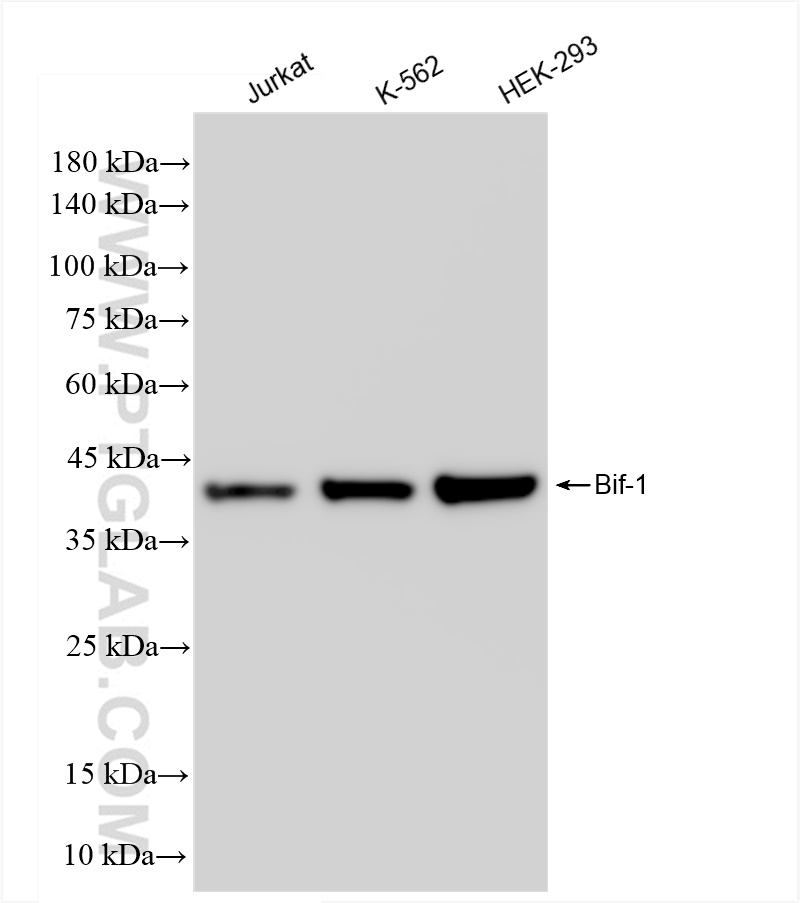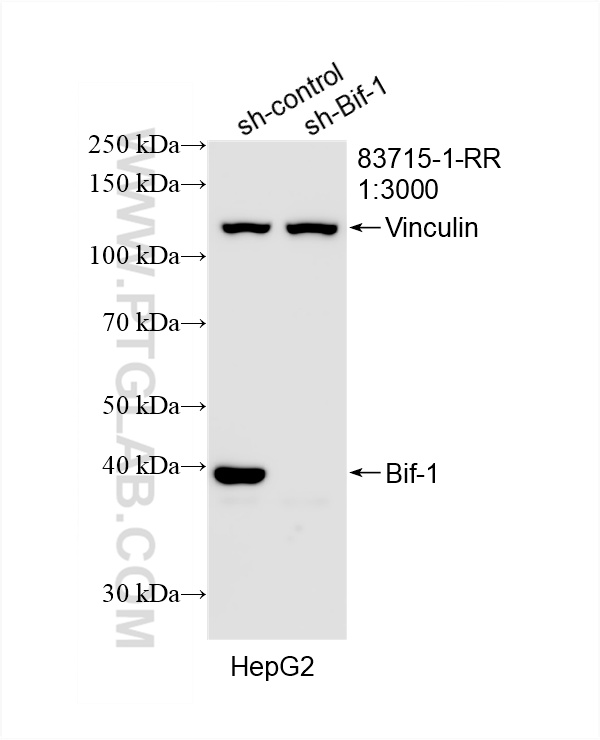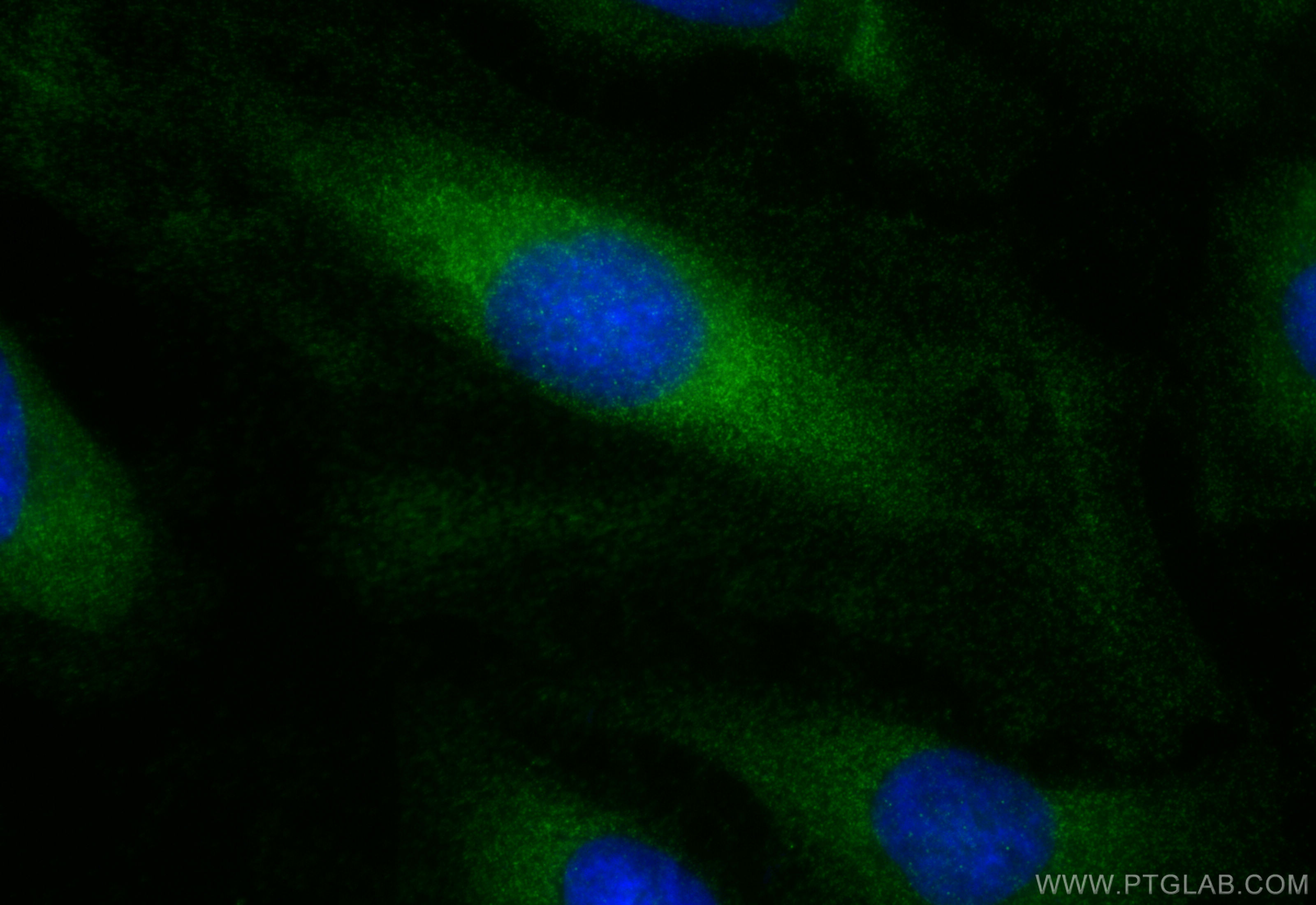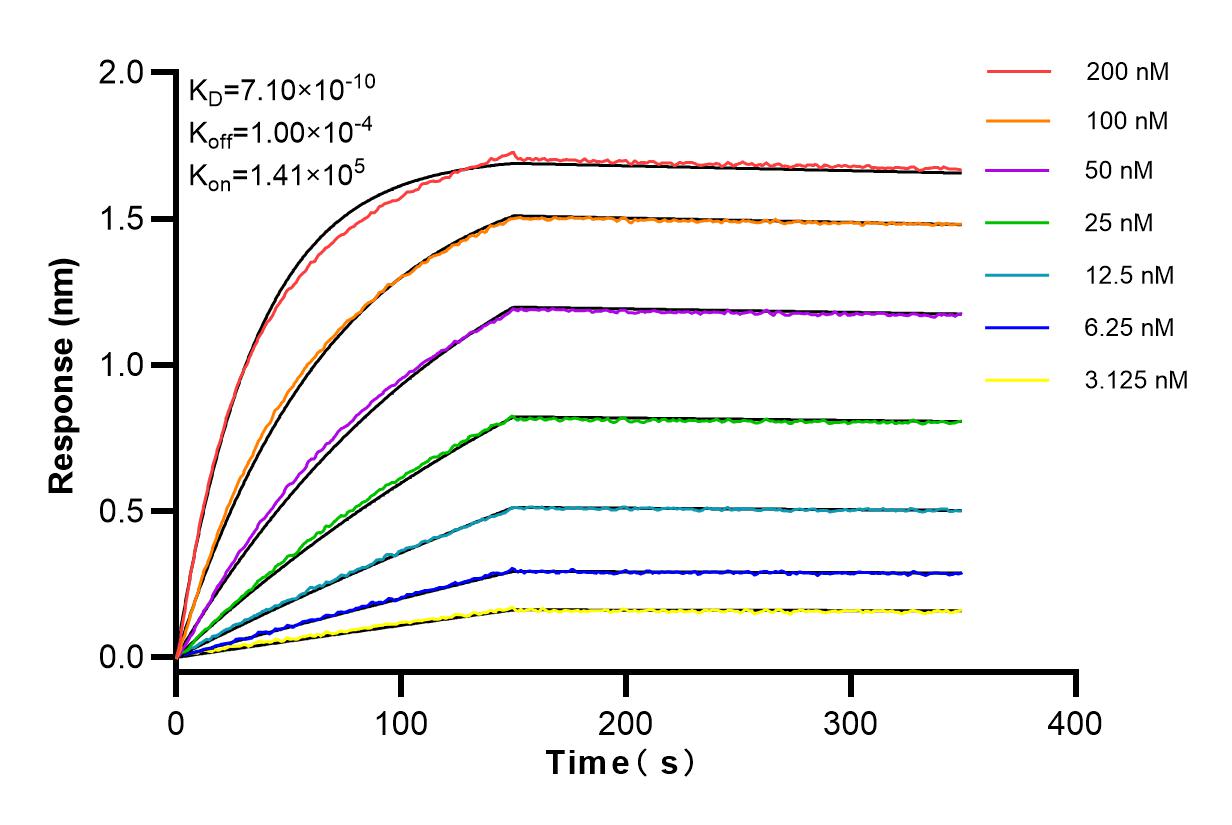验证数据展示
经过测试的应用
| Positive WB detected in | Jurkat cells, HepG2 cells, K-562 cells, HEK-293 cells |
| Positive IF/ICC detected in | HeLa cells |
推荐稀释比
| 应用 | 推荐稀释比 |
|---|---|
| Western Blot (WB) | WB : 1:5000-1:50000 |
| Immunofluorescence (IF)/ICC | IF/ICC : 1:200-1:1000 |
| It is recommended that this reagent should be titrated in each testing system to obtain optimal results. | |
| Sample-dependent, Check data in validation data gallery. | |
产品信息
83715-1-RR targets Bif-1 in WB, IF/ICC, ELISA applications and shows reactivity with human samples.
| 经测试应用 | WB, IF/ICC, ELISA Application Description |
| 经测试反应性 | human |
| 免疫原 |
CatNo: Ag7710 Product name: Recombinant human SH3GLB1 protein Source: e coli.-derived, PGEX-4T Tag: GST Domain: 1-365 aa of BC007455 Sequence: MNIMDFNVKKLAADAGTFLSRAVQFTEEKLGQAEKTELDAHLENLLSKAECTKIWTEKIMKQTEVLLQPNPNARIEEFVYEKLDRKAPSRINNPELLGQYMIDAGTEFGPGTAYGNALIKCGETQKRIGTADRELIQTSALNFLTPLRNFIEGDYKTIAKERKLLQNKRLDLDAAKTRLKKAKAAETRNSSEQELRITQSEFDRQAEITRLLLEGISSTHAHHLRCLNDFVEAQMTYYAQCYQYMLDLQKQLGSFPSNYLSNNNQTSVTPVPSVLPNAIGSSAMASTSGLVITSPSNLSDLKECSGSRKARVLYDYDAANSTELSLLADEVITVFSVVGMDSDWLMGERGNQKGKVPITYLELLN 种属同源性预测 |
| 宿主/亚型 | Rabbit / IgG |
| 抗体类别 | Recombinant |
| 产品类型 | Antibody |
| 全称 | SH3-domain GRB2-like endophilin B1 |
| 别名 | SH3GLB1, 240623E1, Bax interacting factor 1, Bax-interacting factor 1, Bif1 |
| 计算分子量 | 41 kDa |
| 观测分子量 | 41 kDa |
| GenBank蛋白编号 | BC007455 |
| 基因名称 | Bif-1 |
| Gene ID (NCBI) | 51100 |
| RRID | AB_3671317 |
| 偶联类型 | Unconjugated |
| 形式 | Liquid |
| 纯化方式 | Protein A purification |
| UNIPROT ID | Q9Y371 |
| 储存缓冲液 | PBS with 0.02% sodium azide and 50% glycerol, pH 7.3. |
| 储存条件 | Store at -20°C. Stable for one year after shipment. Aliquoting is unnecessary for -20oC storage. |
背景介绍
SH3GLB1 also known as Bif-1, contains an N-terminal domain, a central coiled-coil region, and a C-terminal SH3 domain, but shares no significant homology with members of the Bcl-2 family. SH3GLB1 is involved in activation of caspase-dependent apoptosis by promoting BAX/BAK1 activation (PubMed:16227588).
实验方案
| Product Specific Protocols | |
|---|---|
| IF protocol for Bif-1 antibody 83715-1-RR | Download protocol |
| WB protocol for Bif-1 antibody 83715-1-RR | Download protocol |
| Standard Protocols | |
|---|---|
| Click here to view our Standard Protocols |





